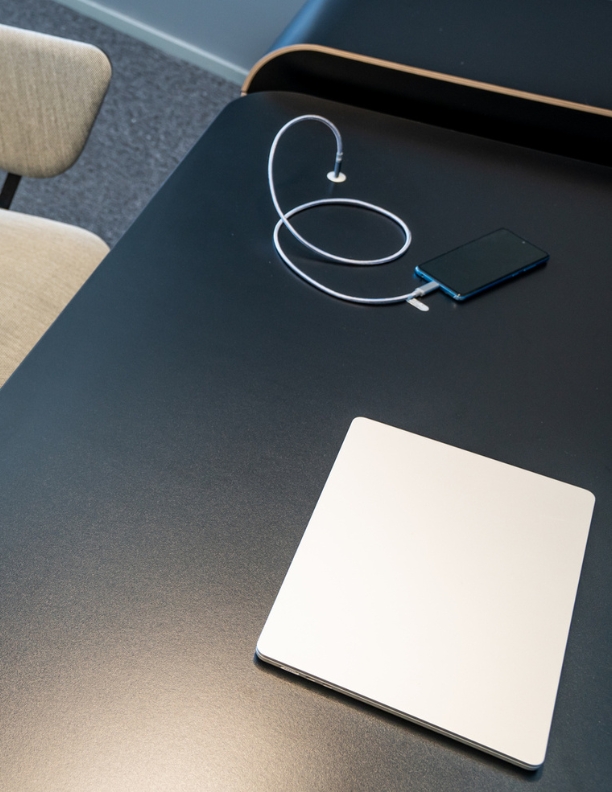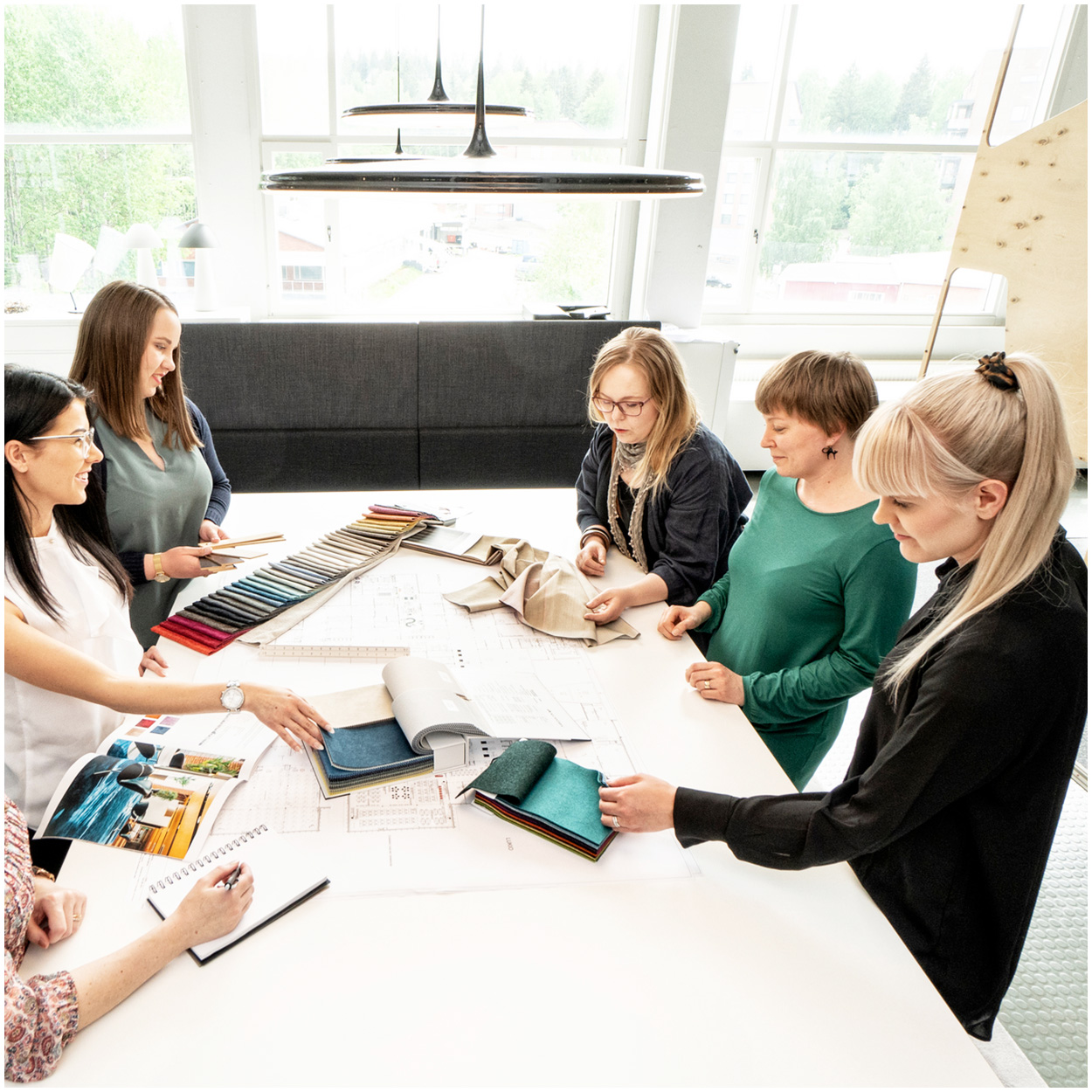December 9, 2024. Written by Reetta Sohlman
As we step into 2025, the evolution of office interiors continues to focus on creating environments that foster well-being, flexibility and collaboration. Offices are becoming hubs of creativity and focus, featuring quiet zones, ergonomic setups and materials designed to enhance comfort and health. These trends are setting a new benchmark for both productivity and style.
Hybrid Model
The era of fully remote work highlighted the challenges of building and maintaining strong company culture and cohesion. Therefore, many companies have embraced a hybrid model, where part of the week is spent in the office and part is worked remotely—whether from home, a café or another location. Employees can choose a working method that suits their tasks and personal situations, where working hours might also be flexible. The office now serves as a communal space that enhancing the meaning of work and old facilities do not necessarily serve new ways of working.
Premises according to work task
The days of large, spacious corner offices tied to job titles are fading. The office should be able to provide various spaces for different types of work: teamwork, work that requires concentration or creative ideation, spaces to work alone or together. The office space must be flexible and adaptable and with intelligent space reservation systems improving the use of the functional workspace.
The feeling of home in offices is expanding
To attract employees from cozy and relaxed home offices back to shared workspaces, more comfort and flexibility are required. The concept of “resimercial design” (a blend of residential and commercial elements) has gained momentum, aiming to create environments that feel welcoming yet professional. This approach incorporates features like soft seating, warm lighting, and inviting textures that mimic home aesthetics, helping employees feel at ease while maintaining a productive atmosphere. Employees appreciate easy access to office, bicycle parking, wellness activities, showers, and cozy restrooms for various needs at their workplace. It is also well appreciated that there are basic services close to the workplace that make everyday life easier. Some companies have even opened their premises for organizing family parties or other events outside work hours to improve the utilization of the space.

Technology for well-being
Modern building technology increases the attractiveness of the office premises. Work ergonomics and functional furniture, high-quality work tools, pleasant acoustics, good indoor air, and lightning are factors that affect work comfort, well-being and coping at work.
Remote work ergonomics
Planning home workspaces might become a recruiting tool in the future. One of the biggest disadvantages of remote work has been the poor ergonomics and inadequate work tools. Offering diverse home office packages to employees can be a differentiating sign of caring and conveying employee’s well-being, maybe that might be one of the key factors for improved wellbeing and success in the year 2025.

MyFlow
Height-Adjustable Table

Tutto Active
Active Seating

ISKU Y Gas
Height-Adjustable Table

Tutto Meeting
Office Chair

About the author
Reetta Sohlman works at ISKU global team as an Interior architect and design support for all market areas. Ten years of experience around the company’s high quality and design furniture leaves it marks on her everyday work. Experience in public space planning combined with her artistic competence visual vision is personalized.


